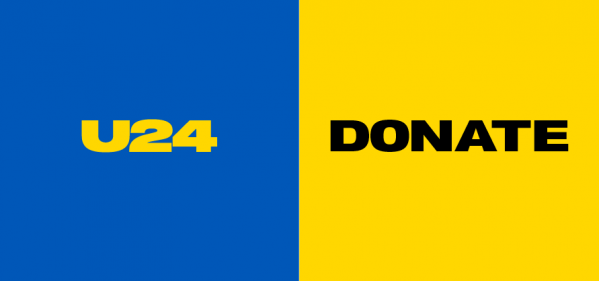Numismatics (64553)
coins
Antique and medieval coins
(302)
Coins of Ukraine
(4784)
Russia and USSR
(10449)
Australia and Oceania
(1178)
Asia
(5571)
Africa
(3407)
Europe
(27996)
North America
(4340)
South America
(1896)
Bank bullion
(0)
Tokens *
(920)
Collections, sets and lots
(94)
Copies *
(1191)
Сommemorative medal
(630)
References and accessories
(1052)
Other
(743)
More
Scripophilia (3008)
stocks, bonds
Shares, bonds of Tsarist Russia
(95)
USSR bonds
(357)
Ukrainian stocks and bonds
(186)
Foreign stocks and bonds
(151)
Insurance (policies, certificates, receipts)
(181)
Banking and financial documents
(112)
Invoices, receipts, letters
(344)
Bills, checks, receipts
(156)
Lottery tickets
(1300)
Samples
(14)
Collections
(0)
Stock and bond coupons
(76)
Literature on scripophilia, accessories
(6)
Other
(30)
More
Second-hand books (72526)
books, magazines
Antique editions before 1920
(6880)
Fiction
(13745)
Children's literature
(5897)
Biographies, memories and memoirs
(945)
Culture and art
(2681)
Folklore*
(109)
Music, notes
(282)
Ethics and aesthetics
(29)
Story
(4666)
Scientific and technical literature
(1400)
Social Sciences and Humanities
(492)
Dictionaries
(268)
Encyclopedias
(207)
Directories
(1081)
Instructions and rules
(421)
Educational literature
(2559)
Travel and guides
(1035)
Religion
(234)
Philosophy
(188)
Psychology, self-knowledge
(241)
Journalism *
(107)
Esoterics
(298)
Medicine
(1290)
Sports literature *
(408)
World of Wildlife
(239)
Leisure and hobbies
(377)
Cooking
(462)
Needlework
(239)
Home and interior
(123)
Agriculture
(363)
Newspapers and magazines
(4749)
Engravings and lithographs
(6192)
Maps and plans
(1557)
Posters
(8861)
Bookplates
(230)
Miniature books
(117)
Manuscripts and autographs *
(69)
Libraries and collections
(6)
Publications in foreign languages
(666)
Other
(2813)
More
Old documents (8199)
Pharmacy, prescriptions
(65)
Certificates, certificates, diplomas, report cards
(566)
Archives and collections
(16)
Forms
(158)
Certificates, diplomas, awards
(806)
Journals, lists, diaries
(44)
Notices, summonses, notices
(48)
Historical documents
(359)
Personal affairs and characteristics
(12)
Notary and legal proceedings
(125)
Document folders
(20)
Patents, copyright certificates
(35)
Letters and telegrams
(381)
Orders and instructions
(69)
Vouchers and sanatorium books
(18)
Certificates and statements
(276)
Certificates
(1510)
Charters and treaties
(57)
Other
(3634)
More
Art and antiques (12290)
Paintings
(5387)
Sculpture (porcelain, bronze)
(2442)
Vases, cups
(668)
Faith and religions
(359)
Forged Products
(4)
Carpets, tapestries
(15)
Boxes, caskets
(278)
Furniture
(293)
Musical instruments
(184)
Writing instruments
(168)
Candlesticks, lamps
(511)
Interior items
(613)
Samovars, bouillottes
(396)
Silver plate
(234)
References
(65)
Other
(673)
More
Faleristics (60183)
orders, medals, badges
Tsarist Russia and the RSFSR until 1923
(83)
USSR 1924-1991
(7298)
Badges
(49799)
Ukraine
(806)
Germany before 1945
(77)
Germany after 1945
(52)
Austro-Hungarian Empire
(22)
Poland
(39)
Mongolia, China, Vietnam, Korea
(14)
Japan and Manchukuo
(19)
Countries of the world before 1945
(26)
Countries of the world after 1945
(264)
Service and memorial signs after 1991
(17)
Sports medals
(272)
Tokens to wear
(60)
Documents for badges and awards
(236)
Collections and prefabricated lots
(10)
Copies
(375)
Pads, strips and parts
(60)
Ribbons for awards
(7)
References and accessories
(215)
Other
(432)
More
Militaria (10333)
Ammunition and equipment
(283)
Hats
(85)
Form
(225)
Cockades
(187)
Collection weapons
(80)
Stripes, chevrons
(7430)
Hunting knives, folding knives, etc.
(213)
Shoulder straps and buttonholes
(682)
Shoulder and lapel insignia
(98)
Military history items
(201)
Buttons
(535)
Literature on militaria
(220)
Other (except weapons)
(94)
More
Other collections (65401)
home stuff
(6489)
Food and drink
(15529)
Games and toys
(4101)
Scale models
(1053)
Advertising
(1703)
Sport
(3099)
Hunting and fishing
(1252)
Tourism and rest
(338)
Theater, music, cinema
(164)
Tobacco and accessories
(667)
Phylumenia (matches)
(404)
Tickets, coupons, subscriptions
(3603)
Calendaristics
(6956)
Cards
(1442)
Office
(332)
Watch
(1686)
Jewelry
(4182)
Clothing and haberdashery
(923)
Barber
(273)
Flags and pennants
(290)
Stones and minerals
(113)
Antique bricks *
(2)
Seals and seals (sphragistics)
(33)
Scrap and parts containing precious metals
(12)
Records, cassettes, tapes, CDs
(5463)
Photographic equipment and optical devices
(1008)
Mechanical devices
(66)
Radio equipment and tape recorders
(654)
Electronics
(140)
Retro Auto\Moto\Bicycle equipment and spare parts
(105)
Devices and tools
(597)
Accessories for collectors
(46)
Other
(2676)
More
Close
Annual output from South African gold mines in the 1960s accounted for about 70% of the world's total production. But the end of the gold standard around the world, as well as the renewed dominance of private property in countries such as the United States (which began in 1974), left South Africa's gold mining and refining industries to seek means of survival in new market conditions. The government decided to focus on the production of investment gold coins, which could attract both collectors and investors. The very first Krugerrands* as proof and proof-like (similar to proof) were minted in 1967. These were the first coins to contain little more than one troy ounce of 22-karat gold. This means that the Krugerrand has a purity of 91.67%. Another component in the alloy is copper. This component not only gives the Krugerrand its distinctive orange color, but also makes the coin stronger and more scratch-resistant. It is very important that the characteristic of the coin is that it has the status of legal tender, that is, it is made not only for international sales, but also for circulation in the country. There is no denomination on the coin, meaning that the Krugerrand is valued at the spot rate of gold at the time the act of buying and selling occurs. Mass production of the one ounce coin began in 1970. In other weight categories (1/2, 1/4, 1/10 ounce) coins have been minted since 1980. The name of the coin is a combination of the word "rand" (the currency of South Africa) and "Kruger", the surname of the prominent military and political leader of the old South African republic, Paul Kruger. His stately, bearded profile is depicted on the obverse of the coin. The reverse depicts a springbok, which is a small South African antelope. The springbok is as much a symbol of South Africa as the bison is a symbol of the United States.


